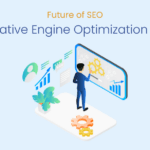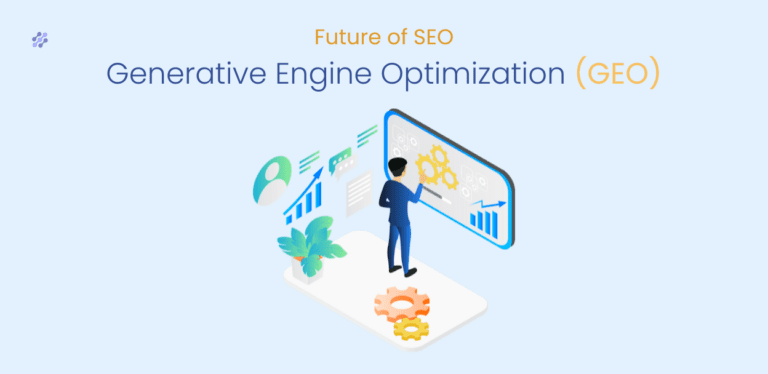- 1 What is Website SEO Optimization: Overview
- 2 Difference Between Search Engine Optimization and Website SEO Optimization
- 3 Key Elements of Website SEO Optimization
- 4 Website SEO Optimization Best Practices
- 5 Website SEO Optimization Tools and Resources
- 6 Measuring and Tracking Website SEO Performance
- 7 Conclusion
- 8 FAQs
In today’s digital landscape, a strong online presence is crucial for any business or individual looking to thrive. But simply having a website isn’t enough. You need to ensure that potential customers can find you amidst the vast expanse of the internet.
That’s where Website SEO Optimization (WSO) comes in. This article will delve into the world of WSO, explaining what it is, why it’s important, and how you can implement it effectively.
What is Website SEO Optimization: Overview
Website SEO Optimization (WSO) is the practice of refining and improving specific elements within website to enhance its visibility and ranking in search engine results pages (SERPs).
Think of it as fine-tuning your website’s internal workings to make it more appealing and understandable to search engines like Google, Bing, and others. The goal is to make your website more relevant to specific search queries, ultimately driving more organic (non-paid) traffic to your site.
Difference Between Search Engine Optimization and Website SEO Optimization
| Feature | SEO (Search Engine Optimization) | Website SEO Optimization (WSO) |
|---|---|---|
| Scope | Encompasses all efforts to improve search engine rankings. | Focuses specifically on optimizing elements within the website. |
| Focus | Holistic approach, including on-page, off-page, and technical SEO. | Primarily on-page and technical optimization of the website itself. |
| Location | Includes activities both on and off the website. | Concentrated on elements within the website’s structure and content. |
| Examples | Link building, social media marketing, content creation, keyword research. | Keyword research, on-page optimization, technical SEO |
| Relationship | WSO is a component of SEO. | SEO is the broader strategy that includes WSO. |
| Analogy | SEO is like planning a whole marketing campaign. | WSO is like optimizing the specific messaging and design of your website as part of that campaign. |
While often used interchangeably, there’s a subtle difference. Search Engine Optimization (SEO) is the overarching strategy encompassing all efforts to improve search engine rankings.
WSO is a component of SEO, specifically focusing on optimizing elements on your website itself. SEO also includes off-page activities like link building and social media marketing, which are external to your website. So, WSO is a critical piece of the broader SEO puzzle.
Key Elements of Website SEO Optimization
WSO involves several key areas:
On-Page Optimization
This focuses on optimizing elements within the website’s content and code.
- Keyword Research: This involves identifying the words and phrases your target audience uses when searching for products or services like yours. Targeting the right keywords is crucial for attracting relevant traffic.
- Content Optimization: Creating high-quality, informative, and engaging content that incorporates your target keywords naturally is essential. This includes optimizing title tags, meta descriptions (the short snippets that appear in search results), header tags (H1-H6), image alt text, and URL structure.
Technical SEO and UX
This deals with the technical aspects of your website that affect search engine crawling and indexing. This includes optimizing website speed, mobile-friendliness, XML sitemaps, robots.txt files, structured data markup (schema.org), and ensuring your website is secure (HTTPS).
User Experience (UX while not strictly “technical,” UX is a vital part of WSO. A positive user experience encourages visitors to stay longer on your site, explore different pages, and ultimately convert into customers. This includes easy navigation, clear calls to action, and a visually appealing design.
Off-Page SEO
While the focus is on the website itself, a brief mention of off-page factors is important. These are activities done outside your website to build its authority and reputation. This primarily involves earning high-quality backlinks from other reputable websites.
Website SEO Optimization Best Practices
- Focus on User Intent: Create content that satisfies the user’s search intent. What are they looking for? Provide valuable and relevant information.
- Mobile-First Approach: Ensure your website is fully responsive and provides a seamless experience on mobile devices.
- Page Speed is Crucial: Optimize your website’s loading speed. Slow-loading websites lead to high bounce rates.
- Regularly Update Content: Keep your content fresh and up-to-date. This signals to search engines that your website is active and relevant.
- Monitor and Analyze: Track your website’s performance using analytics tools and make adjustments as needed.
Website SEO Optimization Tools and Resources
Several tools can help you with your WSO efforts:
- Google Analytics: Provides valuable insights into website traffic, user behavior, and conversions.
- Google Search Console: Helps you monitor your website’s performance in Google search results and identify any technical issues.
- SEMrush, Ahrefs, Moz: Comprehensive SEO tools offering keyword research, competitor analysis, rank tracking, and more.
- SEO Champ: This extension provides you a basic but detailed overview of a website for the first level of SEO and website audit results.
Measuring and Tracking Website SEO Performance
Tracking your WSO performance is crucial to understand what’s working and what’s not. Key metrics to monitor include:
- Organic Traffic: The number of visitors coming to your website from search engines.
- Keyword Rankings: The position your website ranks for specific keywords.
- Bounce Rate: The percentage of visitors who leave your website after viewing only one page.
- Time on Page: The average amount of time visitors spend on your website.
- Conversion Rate: The percentage of visitors who complete a desired action (e.g., making a purchase, filling out a form).
Conclusion
Website SEO Optimization is a continuous process that requires ongoing effort and adaptation. By focusing on the key elements discussed in this article and following best practices, you can significantly improve your website’s visibility in search results, attract more organic traffic, and ultimately achieve your online goals.
- WSO: Optimizes on-page website elements for better search rankings (part of broader SEO).
- Key Focus: Content (keywords, quality), Technical (speed, mobile, site structure), User Experience.
- Best Practices: User-focused content, mobile-first, fast loading, regular updates.
- Goal: Increased visibility, organic traffic, and conversions.
FAQs
WSO is a long-term strategy. It can take weeks or even months to see significant results.
Yes, you can learn and implement many WSO techniques yourself. However, for complex or large websites, it may be beneficial to hire an SEO professional.
No, WSO is an ongoing process. Search engine algorithms change, and your website needs to adapt to stay competitive.
The cost of WSO can vary depending on whether you do it yourself or hire a professional, and the scope of the work involved.




